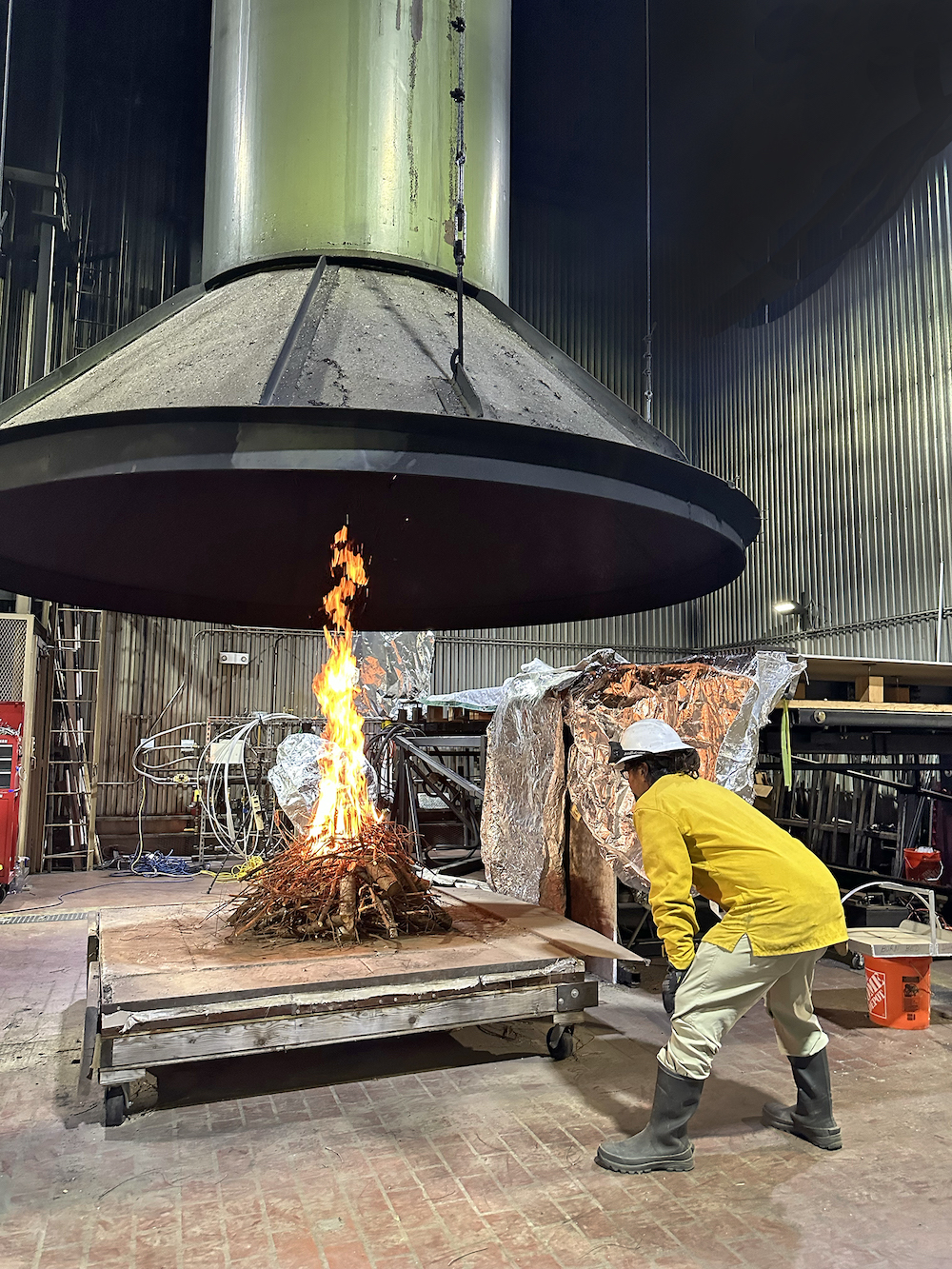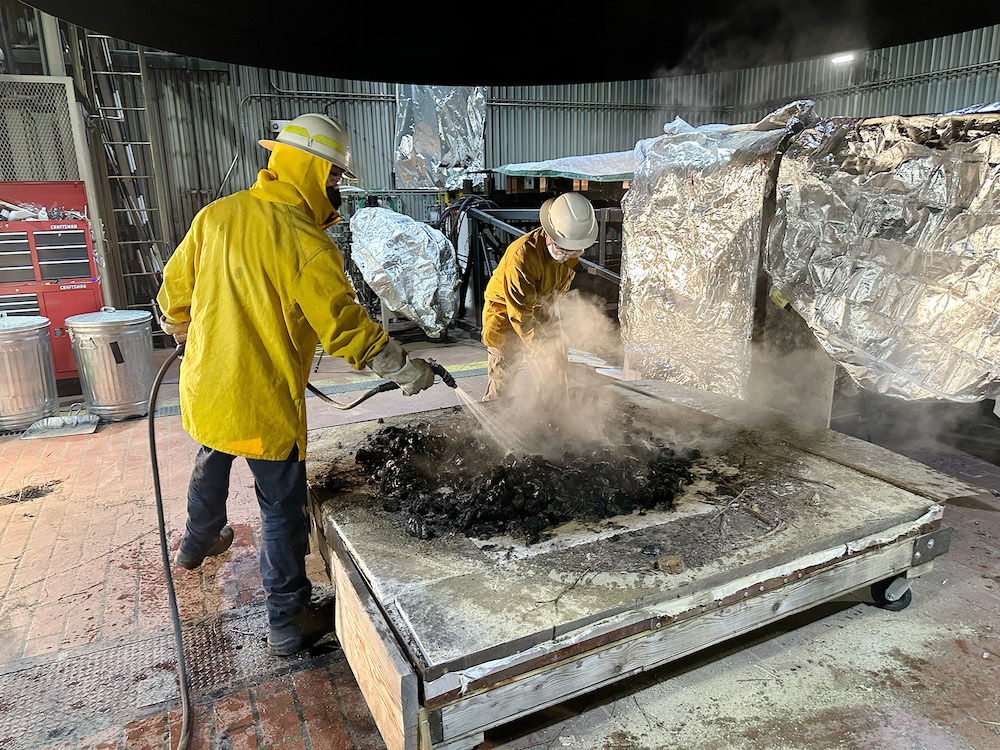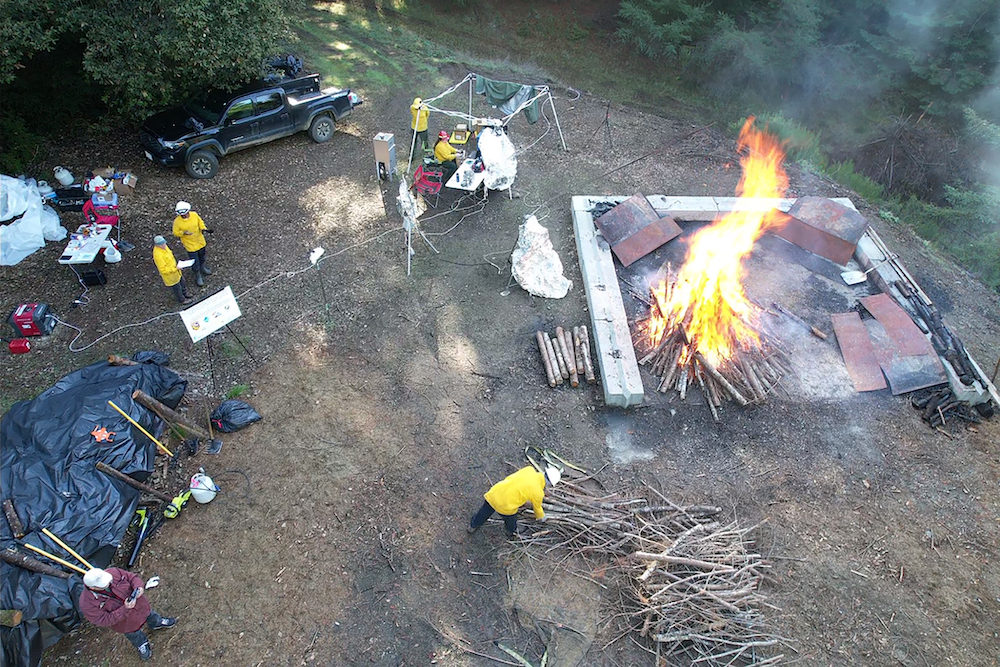Emissions testing in the Usal Forest
Following up on this testing, staff from SEC recently concluded 10 days of emissions testing on these 3 burn methods at the U.S. Forest Service Fire Science Lab in Missoula, Montana.

Cuauhtemoc Villa inspects the flame front in a conservation burn in the USFS Fire Science Lab
Soil health
Biochar improves soil health by increasing water and nutrient retention and reducing compaction.
Water quality
Biochar can reduce heavy metals and chemicals in runoff from roadways, and mitigate minerals leaching from old mine sites. It can also adsorb nutrients from farming nutrient runoff.
Plant health
Biochar can enhance soil fertility and conservation of nutrients, which can lead to increased food security.
Stormwater filtration
Biochar can increase water filtration and drainage, leading to better stormwater management.
Wildfire risk
Making biochar can decrease wildfire risk by reducing the volume of flammable material on site.
Carbon storage
Biochar can sequester carbon for long periods in soil as it degrades very slowly while also providing multiple other benefits.
Cost
Biochar has become more affordable for farmers and industrial users in recent years. SEC trains foresters and farmers how to produce biochar using their own surplus biomass.
Preliminary results indicate the flame-cape kiln technology used (the Ring of Fire Kiln produced by Wilson Biochar) produced the lowest emissions of the three methods tested, and we will release specifics once all of the data has been analyzed and the final reports are released.
Our hope is that this testing will show definitively that these and similarly inexpensive and mobile processing systems can be used to reduce smoke and other pollution when compared to standard burn piles, and that high-quality, field-produced biochar can be made on-site in forests and in agricultural settings and considered a best-practice by air districts throughout the state.

SEC’s Robert Symens-Bucher and Cuauhtemoc Villa extinguish a conservation burn pile to save carbon during emissions testing at the USFS Fire Science Lab

